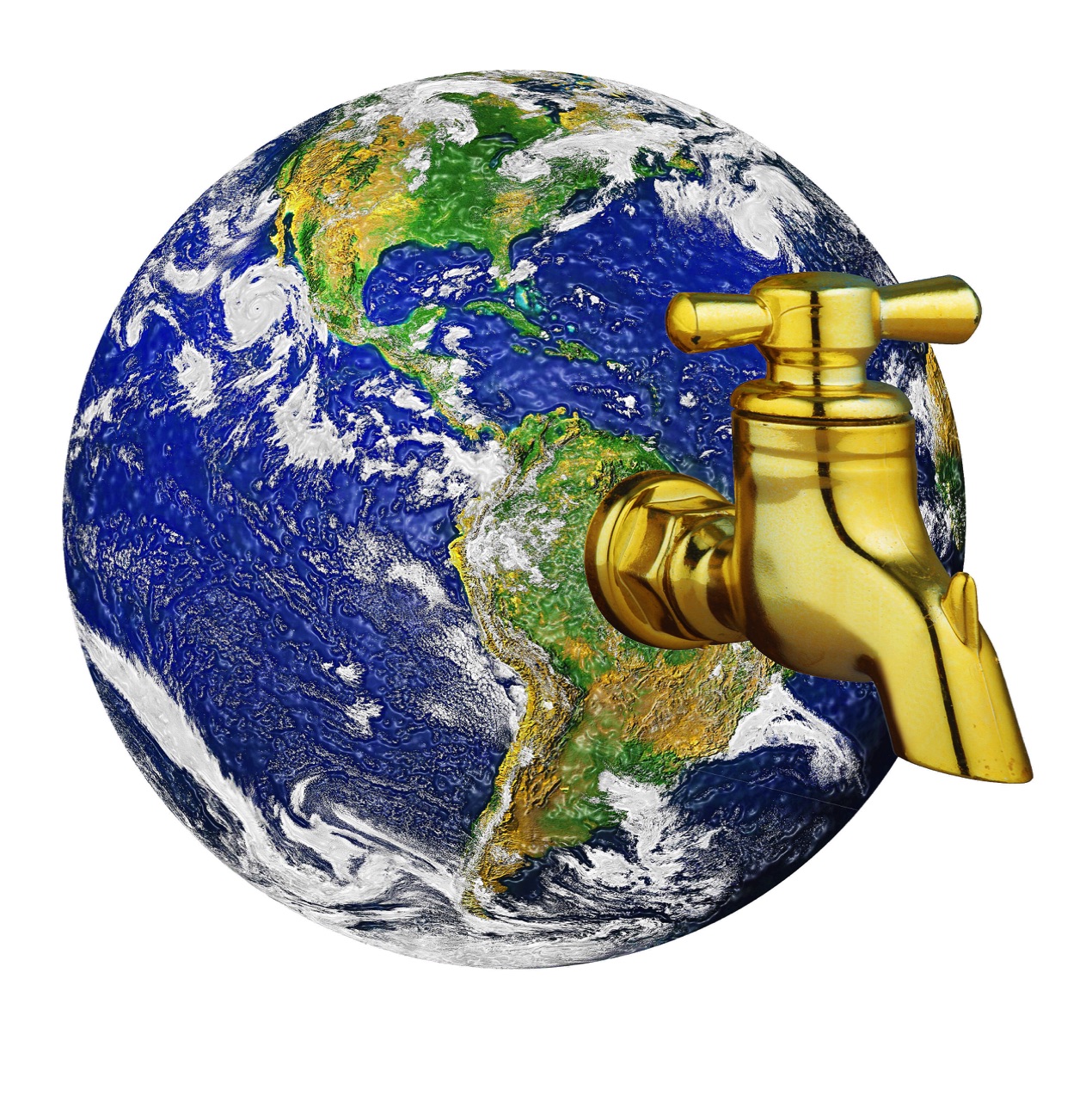
WATER CRISIS IN THE U.S:
Food production depends on water; so these two crisis situations aren’t really separate as they are forever linked into one—the Worldwide Food/Water Crisis. For the purposes of this page, however, we are treating them in two separate sections.
Let's start with one of our States that is in the most trouble due to Water Shortages. The People and the Farmers in Arizona are facing a devastating catastrophe due to an extended drought and the danger posed by depleted water supplies from the Colorado River, which in 2022 was declared "America's #1 Most Endangered River". It can't get much worse than what is described below in the AZ Central Online website:
"The Colorado River, which provides 40% of water for Phoenix, along with most of Arizona’s largest cities, is experiencing low flows unprecedented in U.S. history. The federal government declared the first official shortage on the river in 2021. Maricopa, Pima and Pinal counties were the first to take serious cuts under an agreement struck decades ago to secure support for the Central Arizona Project Canal. So far, those cuts have dried up farms in Pinal County, but most cities and tribes have stayed wet, in part because the Gila River Indian Community volunteered to conserve some of its water in Lake Mead. That arrangement does not guarantee water after 2025, and the Colorado River Basin states are stalled in negotiations to define guidelines for how to manage shortage on a larger scale after 2026."
There's a FOX13 website Article that tells a similar story with a broader focus that says: "Some Of America's Largest And Most Important Rivers Are In Crisis":
"The nation's most endangered river is the Colororado River. America's rivers connect the country, providing most Americans and businesses with a supply of fresh water. 'Unfortunately our rivers are facing a significant crisis,' said Tom Kiernan, president of the American Rivers environmental group. American Rivers unveiled its annual list of the most endangered rivers, and the trouble spans the entire country. Rivers from coast to coast and border to border are endangered. They include: Tar Creek, Oaklahoma; Los Angeles River and the Lower Kern River, California; San Pedro River, Arizona; the Coosa River in the Southeastern U.S.; the Atlantic Salmon Rivers, Maine; the Mobile River, Alabama; the Snake River in the Pacific Northwest and the mighty Mississippi River."
"The 'megadrought' gripping the Western United States has dramatically reduced the Colorado river's inflow, combined with the demands of people and farms. The drought is the worst in 1,200 years. The group behind the list says that's a big part of the problem, but it also blames outdated water manage -ment. But it's not just climate change and drought threatening the rivers. Manmade dams, pollution and too much water withdrawals are all hurting the rivers. The common thread: They're all directly tied to human actions."
Most of us know that until the winter of 2016 and early spring of 2017, California, the bread basket of the U.S. and much of the world, had also been dealing with debiitating multiple-year drought that went from 2012-2016. California had fertile soil, moderate climate, and an unparalleled irrigation system making the Central Valley of California one of the most productive agricultural regions on the planet, producing nearly all of America’s almonds, olives, walnuts, and pistachios; the vast majority of its grapes, strawberries, avocados, carrots, tomatoes, and lettuce; and $13.1 billion worth of milk and cattle. After 5 years of drought, California's bread basket was in trouble, and drought was followed by an El Nino year with torrents of rain and flooding that threatened to make the solution an even bigger problem.
California’s San Joaquin Valley, which is poised in the middle of the state has also been smack dab in the middle of what can only be termed a Water War that started way back in late 2009 and continues today.
On September 9th, 2009, the Central Valley Tea Party website, which is a now a Facebook Page with no 2009 Archives, published an extensive report on “The San Joaquin Valley Water Crisis”. Unbelievably, that Crisis is still raging in 2025. Here is a brief summary of the history of that situation.
"In spite of the fact that California’s San Joaquin Valley farmers grow 25% of the Nation’s food, 'over-zealous' eco-regulation such as Endangered Species Act (ESA), Congress’s action and inaction, andjudicial decisions that protect fish over people have cut back water deliveries from the Delta. As many as 500,000 acres of productive growing land will be forced out of production. U.C. Davis economists predict that as many as 60,000 Central Valley jobs could be wiped out by year’s end. Poor rural communities such as Mendota are experiencing summer unemployment rates as high as 40% or more.”
The sad truth is this battle is still happening. California got some relief when massive floods replaced the drought. According to the 2025 U.S. Drought Monitor and recent reports, California saw significant relief from drought in 2023 due to heavy rainfall and snowpack from atmospheric river events. As of early 2025, most of California is classified as either "abnormally dry" or out of drought, with no widespread severe or exceptional drought conditions.
However, localized dry conditions persist in parts of the San Joaquin Valley and Southern California. California is still the world’s breadbasket, producing critical crops and maintaining $50 billion in revenue. But the San Joaquin Valley’s productivity is reduced by drought, water wars, and the Sustainable Groundwater Management Act (SGMA), with 500,000 acres potentially fallowed by 2040. Farmers have shifted to high-value, water-efficient crops (e.g., almonds, pistachios) that yield higher profits per unit of water, maintaining economic output even with reduced water availability. This adaptability supports California’s breadbasket status.
One water battle was nipped in the bud for a few short years by President Trump in 2017. He solved the question of who owns the water on privately owned land. Under President Obama, the EPA enacted the “Clean Water Rule” which changed the definition of “navigable waters” to include every body of water in the nation right down to the smallest of streams, farm ponds and ditches. According to a February 2017 article online article, entitled “Trump Moves to kill Obama water rule".
“President Trump signed an executive order directing EPA head Scott Pruitt to dismantle the Obama Clean Water Rule. With this executive order Scott Pruitt will begin repealing and rewriting the vastly overreaching EPA rule which defined all water as navigable waterways, including puddles, ponds and water retention structures.”
The battles over water continue to rage as water spigots get turned on and off according to who is in Political Office. In November of 2021, President Biden reinacted Obama's "Clean Water Rule" so the Yo Yo of new EPA Regulation Rewriting began anew., and remains in 2025 with the 2nd Trump Administration. The Biden administration's 2024 framework for the Central Valley Project and State Water Project, aimed to balance water delivery for human use with protections for endangered fish species like the Delta smelt and Chinook salmon. However, the Trump administration's 2025 executive order sought to prioritize water deliveries by potentially expediting ESA exemptions, which could lead to further legal disputes with the state. Historical conflicts, like water diversions to protect the Delta smelt, have sparked ongoing debates about prioritizing species conservation over agricultural and urban water needs. The situation remains complex, with litigation and adaptive management efforts ongoing, reflecting both environmental and economic tension.
But these are not the only battles over water that have been raging in the U.S. In several states across the country, Native AmericanTribes are also fighting for their water rights. The current policy in place regarding water rights for Native Americans living on reservations in the west is based on the Winters Doctrine. But the doctrine leaves a lot to interpretation including things as basic as whether or not the ground water is even included in the mandates of the doctrine.
“This changeability makes it easy for the government to provide insufficient water supplies and it also makes it hard for Native Americans to advocate for more water if they do not have enough. The lack of a specific ruling about Native American water rights also makes it difficult to understand what authority Native Americans have over their allocated water.” (See web.mit.edu)
In the Great Plains and the Southwest, the same situation arises. An Article published in the Cambridge Core blog called "The https://www.cambridge.org/core/blog/2023/06/13/water-the-new-oil/New Oil" says the following:
“By midcentury, water is expected to loom as large as oil in the economic and political life of the country, as parties race to lock up supplies. As droughts exacerbated by climate change and by population growth expand in the Great Plains and the Southwest, Indian water rights loom as a largely unsettled — and unsettling — factor that could affect the price and availability of water to millions of homes and businesses.”
This discussion of our Water Crisis wouldn’t be complete without talking about what happened in Flint Michigan. This is a convoluted story that boils down to bad cost- cutting decisions that let to tainted drinking water that contained lead and other toxins. The city needed a temporary water supply while they waited for the construction of the new pipeline that would connect the city to Lake Huron, so they went back to using the Flint River, which had been badly contaminated by industrial pollution, the presence of fecal coliform bacteria, low dissolved oxygen, oils and toxic substances.
According to the February 22, 2017 CNN website article entitled “Flint Water Crisis Fast Facts”:
“The state Department of Environmental Quality was not treating the Flint River water with an anti-corrosive agent, in violation of federal law. The river water was found to be 19 times more corrosive than water from Detroit, which was from Lake Huron, according to a study by Virginia Tech. Since the water wasn't properly treated, lead from aging service lines to homes began leaching into the Flint water supply after the city tapped into the Flint River as its main water source. Effects of lead exposure in children include impaired cognition, behavioral disorders, hearing problems and delayed puberty. In pregnant women, lead is associated with reduced fetal growth. In everyone, lead consumption can affesct the heart, kidneys and nerves. Although there are medications that may reduce the amount of lead in the blood, treatments for the adverse health effects of lead have yet to be developed.”
If you have read this far, at this point you realize Water Scarcity isn't just a 3rd World problem. To substantiate that truth, Reuters did a review of a documentary called “Last Call at the Oasis” starring Jack Black and environmental activist, Erin Bockovich. The film asks you to think again if you think only 3rd World Countries have water crises. In this eye-opening documentary you learn that:
“A third of US counties face water shortage by the year 2050," Jessica Yu, the filmmaker, told Reuters. "It's not really a solvable problem but we can manage it so much better. This documentary follows environmental activists as they try to hold accountable those who contaminate the Earth's most precious natural resource - clean water.”
According to Yu's research, in just 60 years the aquifer in California's Central Valley could be depleted, leaving barren an area that provides one fifth of the nation's produce.”
FISH CRISIS:
Two men have long been on the world stage who are double-handedly working to change the coming catastrophe in our oceans, which is the complete absence of ocean dwellers, better known as Fish. These two modern heroes are Jean-Michel Cousteau and Charles Clover.
Jean-Michel Cousteau is the son of Jacques Cousteau proving once again the apple does not fall far from the tree. Jean-Michel’s mission is to protect the ocean. His motto as stated on his oceanfutures.org website is: “Protect the ocean and you protect yourself.”
Sadly, as reported on the oceanfutures.org website, the 2010 UN Conference on Endangered Species where the Convention of International Trade of Endangered Species (CITES) listings were considered for proposed terrestrial and marine species, the marine species including sharks and bluefin tuna did not fair well. Neither did the bluefin tuna fair well in the 2024 CITES Meeting. Here is a frightening and sobering quote from that article, which was written over 15 years ago. What has happened to protect sharks and bluefin tuna since then is discussed below. Suffice it to say, that the avoidance of mercury in tuna has most likely served to keep a lot of humans from eating them, but does not say much for their well being as carriers of that toxic element.
“We now know that stocks of bluefin tuna have fallen by at least 85 percent in the Mediterranean Sea since the industrial fishing era began just 40 years ago. The scientific community believes bluefin tuna may be extinct in less than five years if immediate management steps are not taken. If bluefin tuna had received enough votes for Endangered Species designation under CITES Appendix I, there would have been a complete ban on trade in the species among CITES signatories. But Japan, China and other countries voted against the CITES listing, opposing international authorities in the regulation of ocean fish. We are obliged to better understand the connection between epic struggles for survival of entire species and the items on our dinner plates. While not simple, that may be the critical connection that determines the future of the bluefin tuna."
The failure of CITES to include bluefin tuna in their CITES Trade listings is still going on right up to mid 2025. The current state of protection for bluefin tuna, specifically the three main species—Atlantic bluefin tuna (Thunnus thynnus), Pacific bluefin tuna (Thunnus orientalis), and Southern bluefin tuna (Thunnus maccoyii)—is shaped by international and regional management frameworks, but none are currently listed under the recent 2024 CITES frameworks.
However some shark species did make it onto the CITES framework and are now protected including: the Shortfin Mako Shark and Longfin Mako Shark. No thanks to CITES, some species of bluefin tuna appear to be recovering according to the International Union for Conservation of Nautre (IUCN) Red List data. This good news is due to regional protection by the International Commission for the Conservation of Atlantc Tunas (ICCAT), the Western and Central Pacific Fisheries Commission (WCPFC) and Inter-American Tropical Tuna Commission (IATTC), and the Commission for the Conservation of Southern Bluefin Tuna (CCSBT).
The second hero of the ocean dwellers, Charles Clover, wrote a book called “The End of the Line: How Overfishing Is Changing the World and What We Eat”. In February of 2010, the DVD, which was two years in the making, was completed and made a big impact. Charles is now the Executive Director of the Blue Marine Foundation. He is on the same mission he persued when he made his documentary as stated on their website, which is "top-down intervention to improve governance of our seas and bottom-up project delivery to help local communities who are at the front line of ocean conservation." On his previous website, he asked this frightenig question:
"How is it possible that 3.5 billion years of evolution in the sea could be extinguished in a single human lifetime? Are we really going to see the end of wild fish in the sea over the next half century?”
On April 26th, 2009, an article appeared in the UK's Guardian, entitled “No tuna, no salmon. No oysters, no skate. Not cod and chips. Imagine a world without seafood for supper. It’s nearer than you think.” It was written by Andrew Purvis who attended the annual European Seafood Exposition in Brussels, the world’s largest seafood trade show. He described it as “a grim reminder of man’s dominion over the oceans”. Here are some shocking statistics about what’s really happening to our overfished oceans from that article.
“What the organizers must know, but are keeping mum about, is that the oceans are in a perilous state. The UN's Food and Agriculture Organization (FAO) estimates that 70% of the world's fisheries are now fully exploited (i.e., fished to the point where they can only just replenish themselves), overexploited or depleted. The majority of fish populations have been reduced by 70-95%, depending on the species, compared to the level they would be at if there were no fishing at all. In other words, only five per cent of fish are left in some cases."
"Where have all those other fish gone? In short, we have eaten them. Tens of thousands of bluefin tuna used to be caught in the North Sea every year," says Callum Roberts, professor of marine conservation at the university of York. "Now, there are none. Once, there were millions of skate - huge common skate, white skate, long-nosed skate - being landed from seas around the UK. The common skate is virtually extinct, the angel shark has gone. We have lost our marine megafauna as a consequence of exploitation."
So let's look at that same annual Europen Seafood Expo of 2024. The organizers are still "keeping mum" about the perilous state of our Oceans, but insights from presentations, panels, and initiatives highlighted at the event—combined with broader 2024 fisheries data—offer key conclusions about global fish populations and their management. Although there are glimmers of hope, key players like the UN's Food and Agriculture Organization (FAO) are sounding the alarm with statements like:
"The FAO’s 2024 State of World Fisheries and Aquaculture (SOFIA) report, referenced in broader 2024 discussions, notes that 33.1% of assessed fish stocks are overfished, a slight improvement from previous years but still critical. Species like Pacific bluefin tuna and Southern bluefin tuna remain depleted (6.3% and 20% of unfished biomass, respectively), requiring continued strict management. The FAO’s 2024 data suggests that overfishing persists in many regions, and expo discussions noted that government frameworks often lag behind industry initiatives."
The following are Links to Articles written in 2024 and 2025 about how we are still Overfishing our Oceans in spite of the many warnings over the past two decades:
National Geographic: "How overfishing threatens the world's oceans—and why it could end in catastrophe", June 15, 2025
World Resources Institute: "6 Opportunities for Ocean Conservation in 2025", February 4, 2025
Ocean Generation: "The impact of overfishing and what you can do about it", August 30, 2024
Marine Stewardship Council (MSC): "What Is Overfishing", 2024
EcoBlvd: "Overfishing: A Growing Threat to Oceans", August 1, 2024
Blue Life Hub: "Overfishing: impacts, causes and what to do", July 12, 2024
According to the Gloucester Times published in Gloucester, Maine, 2012 was the dawning of a Crisis year for the fishing industry. The Gloucester Times Link is now a Pay To Read site costing $.99. So just take our word that the below Quote is accurate. Finally, due to some chilling assessments of the numbers of Gulf Maine Cod and Yellow tail Flounder, new restrictions have been put into place reducing the Yellowtail catch by 80% and the Cod b 22%. For the families whose livlihoods depends on fishing, this is devastating; but not nearly as devastating as it would be if we simply ignored what is happening in our oceans and merrily went on our way decimating the wild fish populations:
"The cut comes after the most recent research showed diminishing numbers of yellowtail and the US saw its portion of the stock, which it shares with Canada, reportedly shrink to its lowest level. Vito Giacalone, a Gloucester fisherman and policy analyst with the Northeast Seafood Coalition, said the New England industry could lose 30 million pounds of fish this year, which accounts for more than half the value of the entire fishery.”
That was 2012. What's happening in 2022-2025 according to the IUCN Red List? Atlantic Cod has been listed as "Vulnerable" since 2010 with no change. The NOAA Stock Assessment (2022) lists Maine's Cod stock as Overfished with the population size unknown due to highly uncertain assessment results. Overfishing is occurring, though at reduced levels compared to historical highs.
The IUCN Red Line does not list the Yellowtail Flounder, but they have been managed as a depleted species in all U.S. waters. This species is in much better shape than the Gulf Maine Cod with some Flounder not Overfished while others like the Georges Bank Stock labeled as Overfished indicating there's a delicate balance between saving our Fish Stocks and decimating them.
Aquaponics awareness is growing exponentially as it’s an Agri-Tech concept that is quickly moving into the mass consciousness. In some ways, Aquaponics is to traditional agriculture what television is to the radio or what the computer is to the typewriter—DISRUPTIVE! Aquaponics is causing a revolution in food growing, and it is the most important food-growing technology on and off our planet to date.
Aquaponics is a cross-linked Ecosystem that grows both fish and vegetables. Through a process called Nitrification, the fish waste is transformed into nutrient rich water to feed the plants. The plants absorb these nutrients and return the cleaned water to the fish. This is done in a multi-pass recirculating aquaculture system (RAS). This natural process makes Aquaponics systems the most efficient, resource conserving food growing technology known today because they grow two crops, Food Fish and Vegetables using 90% less water than conventional farming. To put it simply, Aquaponics is Water Conserving, Multi-Crop Farming.
BioPonic Earth has designed proprietary Aquaponics Agri-Tech in their Food Forever Farms for large-scale food growing starting with a Micro Food Forever Farm with a minimum of 70 sq. ft. These Farms rapidly and effectively produce Vegetables and Food Fish. They are ecologically sustainable and free of negative environmental influences. They, therefore, relieve the Farmer/Entrepreneur from soil-born diseases, most pests, weeds, chemicals like herbicides and pesticides and, of course, when the Farmer/Entrepreneur uses Organic or non GMO seeds, they are Free of GMO’s.
We live in strange and challenging times, and Aquaponics is the answer to the three most important drivers for change in how we grow, distribute and think about food:
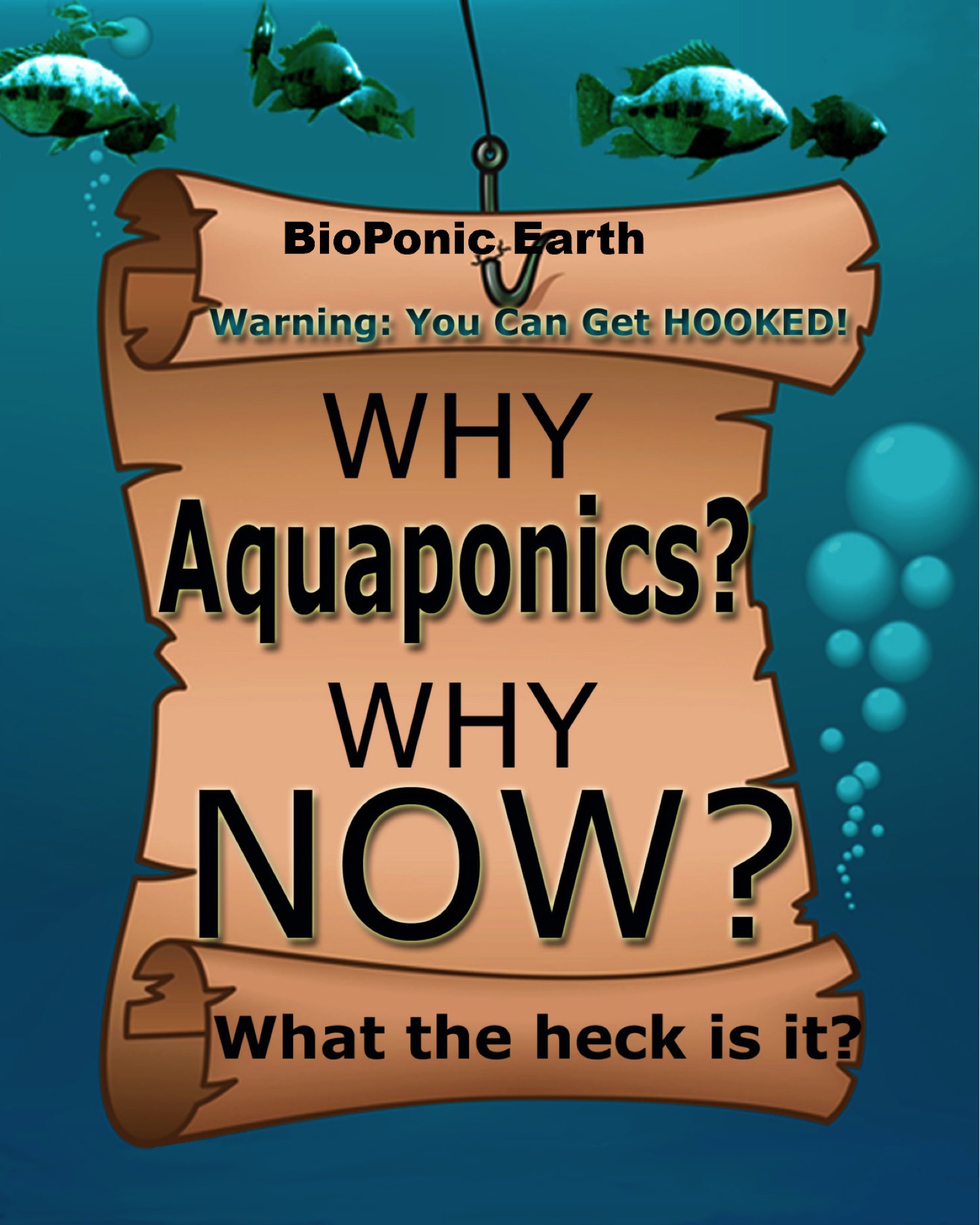
FOOD CRISIS:
On March 25, 2022, President Biden announced there are going to be "Real" Food Shortages in the World and in the U.S. See Video on our Home Page. One of the causes of these projected but unrealized Food Shortages was related to the sanctions he placed on Russia due to the Russia/Ukraine War. Russia supplies the world with lower cost fertilizers, and fertilizer shortages did impact World and U.S. farmers even though in the U.S., we didn't actually see Food Shortages. We were lucky that time.
In late March of 2025, three years after Biden's Food Shortages announcement, the new U.S. Administration restored Russia's access to fertilizer exports alleviating this difficulty and assisting U.S. farmers to lower their costs and grow more food. But in early summer of 2025, there was the 12 Day War between Israel and Iran that again threatened the production of fertilizer as Iran is the 4th largest producer of urea an important component of fertilizer in the world. That War was resolved by the U.S. bombing Iran's Nuclear facilities, but peace in the world remains tenuous making Food Insecure due to the World's dependence on fertilizers.
The 2024 Global Report On Food Crisis, stated that:
"nearly 282 million people or 21.5 percent of the analyzed population in 59 countries/territories faced high levels of acute food insecurity requiring urgent food and livlihood assistance. This represents an increacres of nearly 24 million people compared to the previous high reached in 2022."
Now, in 2025, that future still looks bleak. According to the U.S.Bureau Of Labor Statistics, Consumer Price Index: for May 2024 to April 2025.
"In May, the Consumer Price Index for All Urban Consumers rose 0.1 percent, seasonally adjusted, and rose 2.4 percent over the last 12 months, not seasonally adjusted. The index for all items less food and energy increased 0.1 percent in May (SA); up 2.8 percent over the year (NSA)."
In 2021, the FOA put out their latest Report on, “State of the World’s Land and Water Resources” stating in the Title—“Systems at breaking point”. We will be discussing more about the Water Crisis below. In 2015, the United Nations published their first and only Report on the Status of the World’s Soil Resources, in which they stated the following:
“The main message of this first edition is that, while there is cause for optimism in some regions, the majority of the world’s soil resources are in only fair, poor or very poor condition. 33% of land is moderately to highly degraded due to erosion, salinization, compaction, acidification and chemical pollution of soils.”
According to the 2025 Global Report On Food Crisis,
"more than 295 million people faced acute hunger last year, the sixth consecutive annual increase. And Climate extremes are growing in intensity--wreaking havov on global food security, crippling harvests ad breaking supply chains. The message is stark. Hunger and malnutrition are spreading fster than our ability to respond, yet globally, a third of all food produced is lost or wasted."
The World Food Programme (WFP) Global Outlook paints the same challenging picture:
"Global humanitarian needs are skyrocketing, fueled by the growing number of devastating conflicts, more frequesnt climate disaster, and exensive economic turmoi."
And so goes The World Bank Food Security Update, May 16, 2025:
"Conflict and insecurity, weather extremes, and economic shocks continue to drive acute food insecurity."
There is so much more that could be said about the Worldwide Food Crisis, but that's for another time. Before we leave this important subject, here’s another shocking statistic regarding the debilitated condition of our world’s soil:
“An estimated 75 billion tons of soil is lost annually with more than 80% of the world’s farming land moderately or severely eroded.” We have only "60 Years of farming left if soil degradation continues." (See worldpreservationfoundation.org)
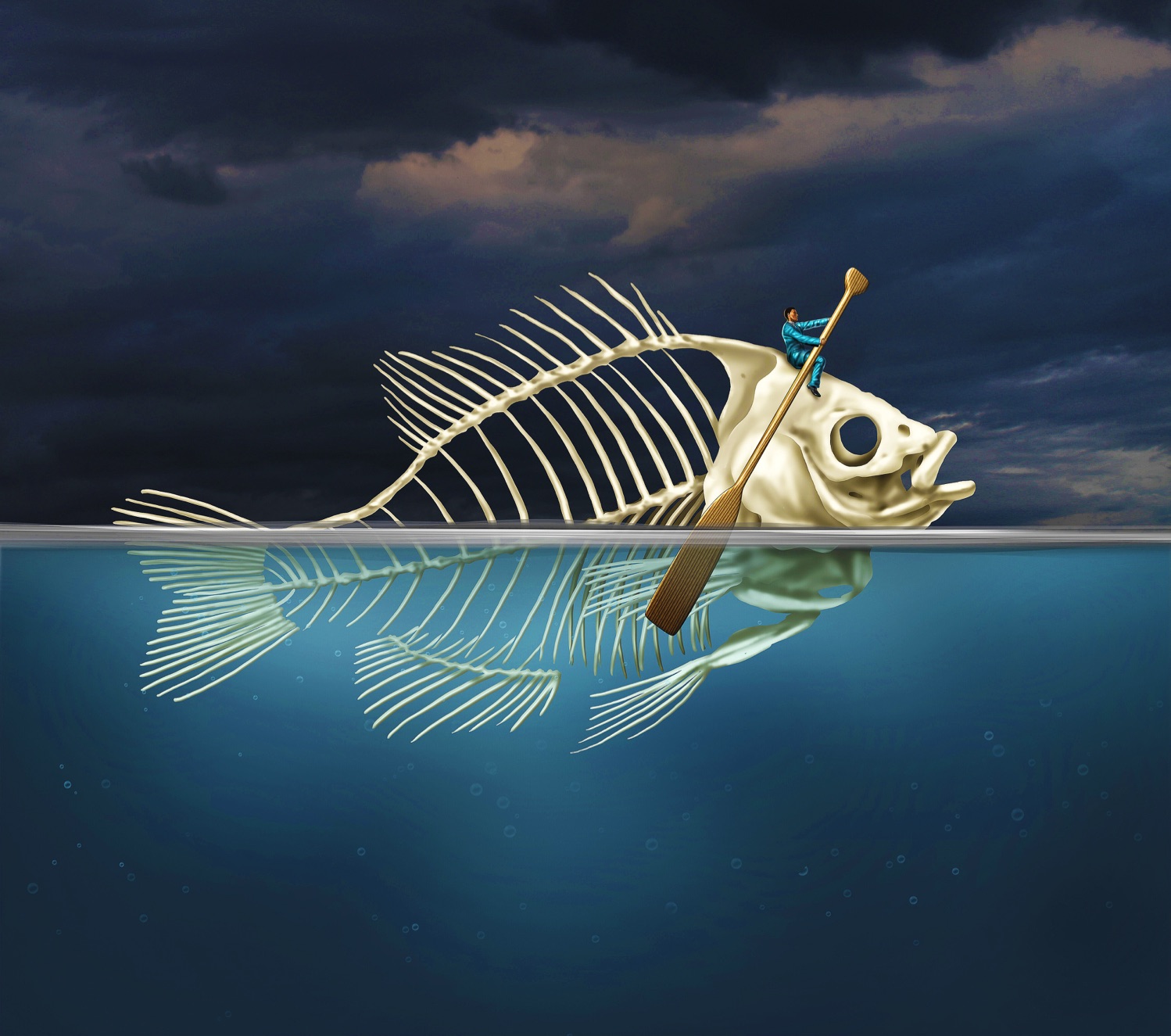
The National Geographic published an article entitled “Still Water: The Global Fish Crisis” in which the author, Fen Montaigne, says the following: (The above Link is a Reprint without the great Photos).
“The world's oceans are a shadow of what they once were. With a few notable exceptions, such as well-managed fisheries in Alaska, Iceland, and New Zealand, the number of fish swimming the seas is a fraction of what it was a century ago. Marine biologists differ on the extent of the decline. Some argue that stocks of many large oceangoing fish have fallen by 80 to 90 percent, while others say the declines have been less steep. But all agree that, in most places, too many boats are chasing too few fish.”
The above Article didn't even mentioned the devastation that the BP Oil Spill and the Fukushima Quake brought down on our ocean wild life. Those disasters and the real affects of those disasters are pretty much being kept under wraps and have been for years. Suffice it to say, we have and will be losing millions of fish due to oil contamination and radiation. Time and cross boarder battles between Countries isn’t changing this dire situation fast enough. There is some hope for a few Fish Stocks, but we're moving too slowly.
In an article published on the National Geographic website in late August of 2016 entitled “One of the World’s Biggest Fisheries Is on the Verge of Collapse”, the author explains that:
“The South China Sea is one of the world’s most important fisheries, employing more than 3.7 million people and generating billions of dollars every year. It is richer in biodiversity than nearly any other marine ecosystem on the planet, and its fish provide food and jobs for millions of people in the 10 surrounding countries and territories. Of those, seven—Brunei, China, Indonesia, Malaysia, the Philippines, Taiwan, and Vietnam have competing claims. But after decades of free-for-all fishing, stocks are dwindling, threatening the food security and economic growth of the rapidly developing nations that rely on them. China asserts a right to almost the entire sea. It has demarcated a broad, U-shaped area that it says has historically been China’s but that under international law includes the waters of other nations. Every other country in the South China Sea dispute, including the Philippines, bases its claims on the United Nations Convention on the Law of the Sea, the international pact that defines maritime zones and first went into effect in 1994.”
In 1999, China enacted a fishing ban from May 1 through July to help consrve the delicate balance in the South China Sea. This annual ban is still in effect as of 2025 with some timeline variations:
"The ban is in effect from 12:00 p.m. on May 1, 2025 to 12:00 p.m. on August 16, 2025 annually. This applies to waters north of 12°N, including the Beibu Gulf and contested areas like the Paracel Islands and Spratly Islands."
All commercial fishing activities, except tackle fishing, are suspended. Major operations like trawling and netting must halt, and vessels are required to return to port. China’s Coast Guard patrols fishing grounds and ports (e.g., Beibu Gulf, Pearl River Estuary) to enforce compliance, with actions targeting illegal fishing. China claims the ban, in place since 1999, promotes sustainable marine fishery development and improves marine ecology by allowing fish stocks to recover. However, critics argue it serves geopolitical aims, reinforcing China’s territorial claims. There are now Fish Wars that are eerily similar to Water Wars where Countries engage in political battles over scarce resources. We maintain that Aquaponics Agri-Tech can be one of the solutions for the World Food, Water and Fish Crisis.
When millions of people around the globe are raising their own Fsh and Vegetables in Food Forever Farms, the World’s Wild Ocean Fsh will have a chance at recovery, Vegetables will be plentiful and not dependent on Seasons or Weather allowing our depleted Soils to recover and Water Scarcity will be a problem of the past as Agricultural Water use will be greatly reduced.
Our final entry in this section is a great up to date Resource, the 2025 Food and Agriculture Organizaiton of the United Nations (FAO) "Review of the state of world marine fishery https://openknowledge.fao.org/server/api/core/bitstreams/69cd62da-7c32-46c8-9be5-9fdd7f21eb91/contentresources".
SUMMARY:
In January of 2022, ItsAFishThing.com published an article delineating the 24 Overfishing Statistics & Facts. We haven't even come close to winning this battle after a decade between now and several of the above quoted articles.
What we have described here in this three-pronged Crisis is, indeed, frightening and not at all exaggerated. We truly do face dire conse- quences if we don’t shift our thinking about these three important necessities for life on our planet, Food, Water and Fish.
But what is really amazing and exciting is this: “Aquaponics” can nip the whole ugly three-pronged Crisis right in the bud.
BioPonics Earth Can Solve Every Crisis Described because:
Food Forever Farms can grow healthy, organic food without depleting the world’s tired soil.
Food Forever Farms can grow healthy, organic food while being safely sheltered in greenhouses or growhouses where they are more protected from the effects of climate change.
Food Forever Farms can grow healthy, organic food without using pesticides, herbicides or GMO biotechnology .
Food Forever Farms can grow healthy, organic food without leaching one ounce of toxic waste into the environment.
Food Forever Farms can grow healthy fish giving the ocean’s fish time to recover from near extinction.
Food Forever Farms can grow vegetables and fish while using 90% less water.
It’s a no-brainer. The only mystery is why aren’t there thousands of BioPonic Earth Food Forever Farms up and running right now?
To quote another common phrase, “Timing is everything”, and now is the time for BioPonic Earth Food Forever Farms. The U.S. is ready and in dire need of this new food-growing Agri-Tech, and BioPonic Earth, is ready to facilitate the building of Food Forever Farms wherever they are needed.
Let's take back our Food System together and Save Our Planet with BioPonic Earth Food Forever Farms. Call us at 760-671-3053 to get started today.
Global Water Deficit is the Result of Demand Tripling over the Last Half-century
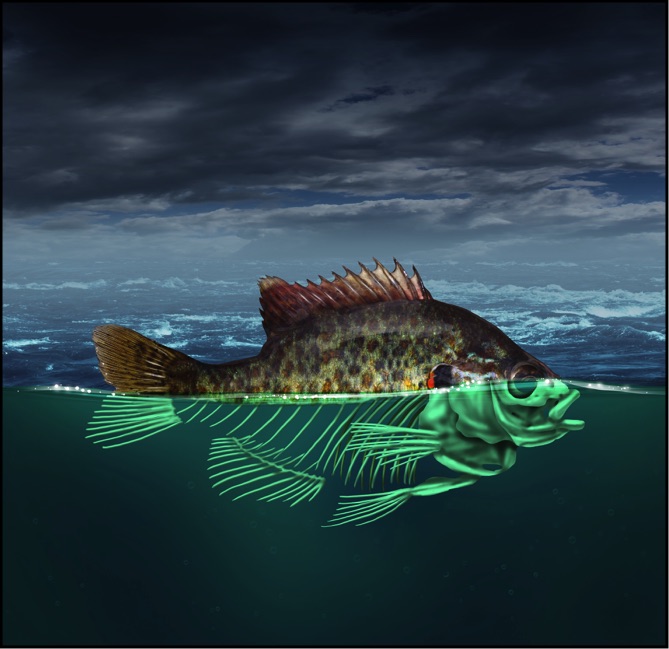
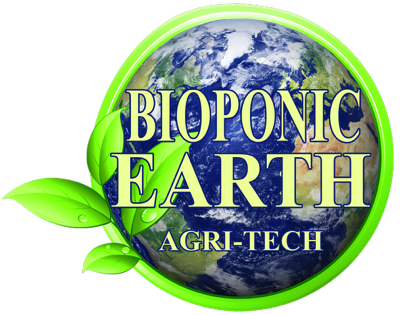
WATER CRISIS IN DEVELOPING NATIONS:
(We will be adding more information to this Section in the near future)
According to the World Water Council in their World Water Vision Report:
"There is a water crisis today. But the crisis is not about having too little water to satisfy our needs. It is a crisis of managing water so badly that billions of people - and the environment - suffer badly."
The UN World Water Development Report, 2023 put out a warning that:
"Between two and three billion people worldwide experience water shortages. These shortages will worsen in the coming decades, especially in cities, if international cooperation in this area is not boosted."
As reported by TCD, The Cool Down website, The Global Water Monitor's (GWM) latest report, which is a network of organizations and individual experts who collaborate with the goal of offering free, rapid, and global climate and water resource data, paints a dire outlook for 2025:
"warning of the potential for new droughts to develop or intensify in northern South America, southern Africa, northern Africa, Central Asia, parts of North America, and Western Australia."
In March of 2025, The Business & Financial Times even got into the Water Scarcity Crisis:
"Statistically, 703 million people – one in eleven globally – lack access to clean water. The global water crisis is no longer a distant threat but a present-day reality exacerbated by climate change, population growth, and mismanagement of water resources. Addressing this crisis requires a multifaceted approach that includes innovation, policy reform, legal action, and global cooperation."
Water conservation is the great gift of Aquaponics because Aquaponic Farming uses 90% less water than traditional tillage farming. All of the water that is used to grow the Vegetables and raise the Food Fish is kept in the system and continuously recirculated. This is the answer to the U.S. and the World’s Water Crisis.
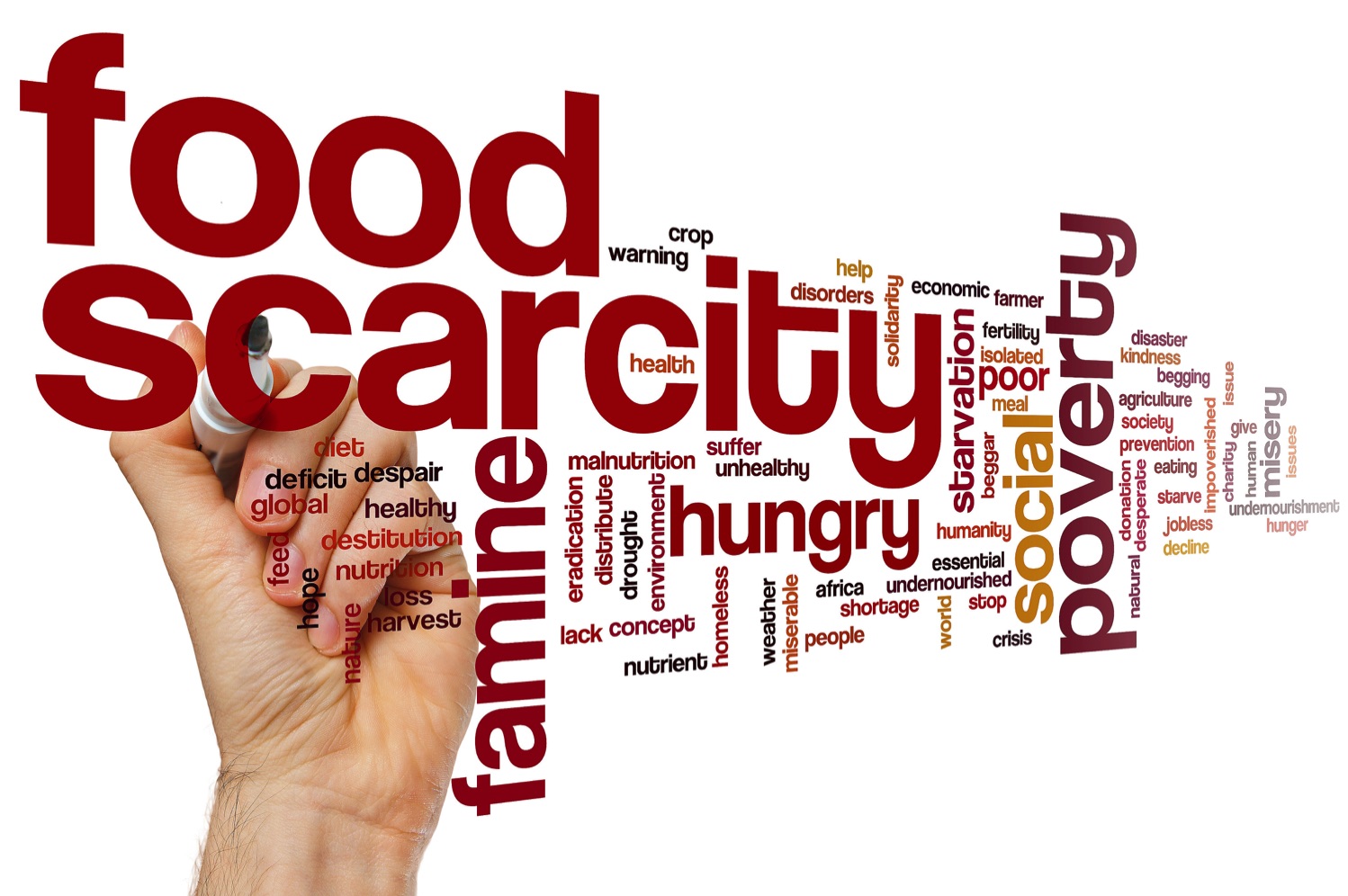
The Worldwide Food, Water & Fish Crisis: